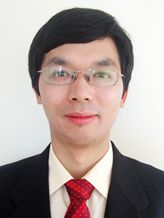Prof. Hugen Yan [Fudan University, China]
Title: Plasmon Damping in Graphene
Time: 10:00 - 11:00 AM, Friday, November 6, 2015
Place: Conference Room 201, HPSTAR (Shanghai)
Host: Dr. Hao Yan
Abstract:
Graphene plasmonics has attracted lots of attention recent years, because of the tunability, low loss and strong energy confinement of the plasmons in graphene. In this talk, Dr. Yan will focus on the damping mechanisms in grapheme plasmons. For grapheme plasmonic structure with size in the micron range, the major damping channel is due to the carrier Drude scattering in the bulk. With shrinking size of the structure down to 100nm range, the edge of the structure plays an important role. When the plasmon energy is greater than the graphene optical phonon energy, a new damping channel will be introduced. The plasmon can decay through the emission of an optical phonon together with an electron-hole pair. There are many ways to reduce damping in graphene plasmons. He will give two examples to show how the plasmon damping can be reduced dramatically.
Biography of the Speaker:
 Prof. Hugen Yan is a professor of Department of Physics, Fudan University. He received his Ph.D. from Columbia University, USA, in 2010.
Prof. Hugen Yan is a professor of Department of Physics, Fudan University. He received his Ph.D. from Columbia University, USA, in 2010.
Prof. Yan's research interests consist of the study of novel low-dimensional materialsby optical spectroscopy techniques, with a major focus ongraphene photonics and plasmonics. His expertise in versatileoptical techniques ranging from single nano-object Rayleighscattering, Raman scattering and time-resolved pump-probemeasurements to terahertz time-domain spectroscopy, FTIR basedbroad-band linear spectroscopy and magneto-optics, equips us topursue many exciting and far-reaching projects. In the pursuit of both fundamental understanding and manipulating of the optical response of the novel materials, his group intends to continue tofollow two interweaving directions: (1) Basic physics interrogated by new techniques and exploration of new materials, such as electronic Raman scattering of graphene plasmons, edgeplasmons in a high magnetic field, optical signatures of plasmarons, and optical response of other 2D van der Waalsmaterials and topological insulators; (2) Application oriented research, such as design, fabrication and characterization of graphene-based optical metamaterials.
